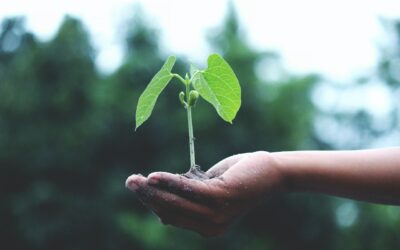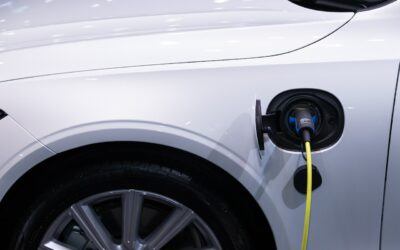This post was originally published on Good on You
Our editors curate highly rated brands that are first assessed by our rigorous ratings system. Buying through our links may earn us a commission—supporting the work we do. Learn more.
Kim Kardashian’s shapewear brand SKIMS is repeatedly commended for its status as an innovator and a leading global brand. But does that ring true for its sustainability and ethics, too? It’s time to answer one crucial question: Is SKIMS sustainable?
This article is based on the SKIMS rating published in July 2024 and may not reflect claims the brand has made since then.
Big on influence, small on impact
In 2024, Kim Kardashian’s brand SKIMS rang in its fifth year with a valuation of $4bn USD. That’s quite an achievement in just half a decade, but it’s hardly surprising given Kardashian is one of the most influential and talked about people on the planet.
SKIMS is a “solutions-oriented brand creating the next generation of underwear, loungewear and shapewear”. It is best known for its variety of colourways that accommodate different skin tones, and sizing options which range from XXS to 5X.
The media mogul didn’t get off to the best start ahead of SKIMS’ launch in 2019, having caused controversy and sparked accusations of cultural appropriation by attempting to trademark the word “Kimono”—a play on her own name—for use as the brand’s moniker. But that proved to be just a blip because SKIMS has gone from strength to strength since the moment it opened for business—literally: the brand’s first product release reportedly sold out in minutes. Among other notable achievements are its naming as the NBA’s official underwear partner in 2023, and a slew of high-profile advertising campaigns—featuring the likes of Usher, Lana Del Rey, and Sabrina Carpenter—that prompted Vox to ask whether SKIMS campaigns were the new Vogue cover.
SKIMS’ reach, valuation, and covetousness mean it holds a huge amount of global power and sway over its supply chain and those who buy into the brand, too. But is it using that for good? It’s hard to know, given how little the brand discloses about its impact, and that’s why Good On You’s analysts rated it “Not Good Enough”. Read on to find out how SKIMS’ sustainability leaves much to be desired.
Environmental impact
SKIMS doesn’t publish sufficient information about its environmental impact, so it scores “We Avoid” in this area. There’s a short statement in its website’s FAQs that reads: “At SKIMS, we are committed to the highest ethical standards and legal compliance in all aspects of our business and product supply chain. We only work with suppliers and vendors who we believe in and share our commitment to sustainability, accountability and transparency.” That doesn’t tell us very much, but there are a few clues elsewhere…
SKIMS’ lack of deep consideration for its impact was epitomised in its “faux nipple bra” campaign. Kardashian posed as a climate scientist, stating in a tongue-in-cheek promotional clip that “No matter how hot it is, you’ll always look cold. Some days are hard, but these nipples are harder, and unlike the icebergs, these aren’t going anywhere,” promising to donate 10% of the bra’s sales to the environmental organisation 1 Percent For The Planet. But this struck many sustainability advocates as tone deaf given that the brand—and Kardashian herself—constantly pushes overconsumption through frequent product drops and sells garments made from unsustainable materials like nylon, which upholds the petrochemical industry and will take hundreds of years to break down.
Then there is the greenwashing thanks to a claim made on SKIMS’ packaging, which boldly stated “I am not plastic”, while analysis from the Changing Markets Foundation’s Greenwash project found that the packaging is labelled as being made from type 4 low-density polyethylene which is… a type of plastic.
In an interview with the Financial Times, the company’s co-founder Jens Grede noted that SKIMS has a “commitment to reduce scope 1 and 2 GHG emissions by 42% by 2030” and that it is partnering with environmental and logistical organisations to do so, but unfortunately we couldn’t find any further, publicly available details of this, and at the time of writing, SKIMS’ “environmental and social partnerships” webpage led to a “404 page not found” error.
Labour rights
“All of our warehouse and factory workers are ensured fair wages, safe environments and healthy working conditions,” says SKIMS’ FAQs. But it’s important to note that “fair wages” aren’t necessarily the same as living wages. The latter refers to the minimum amount needed for a worker and their family to live a decent life, not simply the local market’s average wage, or the legal minimum, which may both be well below what is truly needed for a good quality of life.
SKIMS does, at least, audit its suppliers and has published its method of doing so and a code of conduct online. Because of these factors, for labour SKIMS rates “Not Good Enough”—that’s one up from our lowest score.
Animal welfare
SKIMS makes products that are generally free of animal-derived materials, so we haven’t rated its impact on animals. The brand’s overall rating is based on its combined environment and labour scores.
So, is SKIMS sustainable?
Overall, we rate Kim Kardashian’s SKIMS “Not Good Enough” because it doesn’t disclose enough information about its actions to reduce its impact. As one of the world’s biggest influencer brands, SKIMS has the power and responsibility to, well, influence the fashion industry for the better. But so far it’s not working out that way.
You deserve to see more than two sentences about SKIMS’ environmental impact in its FAQs before you buy, and you also deserve to know whether it is ensuring workers across its entire supply chain are paid a living wage, amongst many other factors.
SKIMS’ co-founder, Jens Grede, made a few claims about the brand’s sustainability efforts in a recent interview with the Financial Times, describing it as “top of mind”, and that it is partnering with organisations such as Supercircle, Watershed, and the Fair Labor Association. But we couldn’t find this information on the brand’s website, which only highlights the importance of disclosing its progress for consumers and the industry to see—even if it’s not perfect. After all, transparency is the first step to fostering a more accountable fashion industry.
Note that Good On You ratings consider hundreds of issues, and it is not possible to list every relevant issue in a summary of the brand’s performance. For more information, see our How We Rate page and our FAQs.
Good swaps
SKIMS’ offering has been described as the type of underwear you think you should be able to get anywhere, but in reality, is hard to find. But our editors went on a mission to show otherwise, because there are, in fact, plenty of brands making more sustainable basics and lingerie with much better transparency. Scroll down to meet a few of our favourite “Good” and “Great”-rated ones.
The post How Ethical Is Skims? appeared first on Good On You.





0 Comments